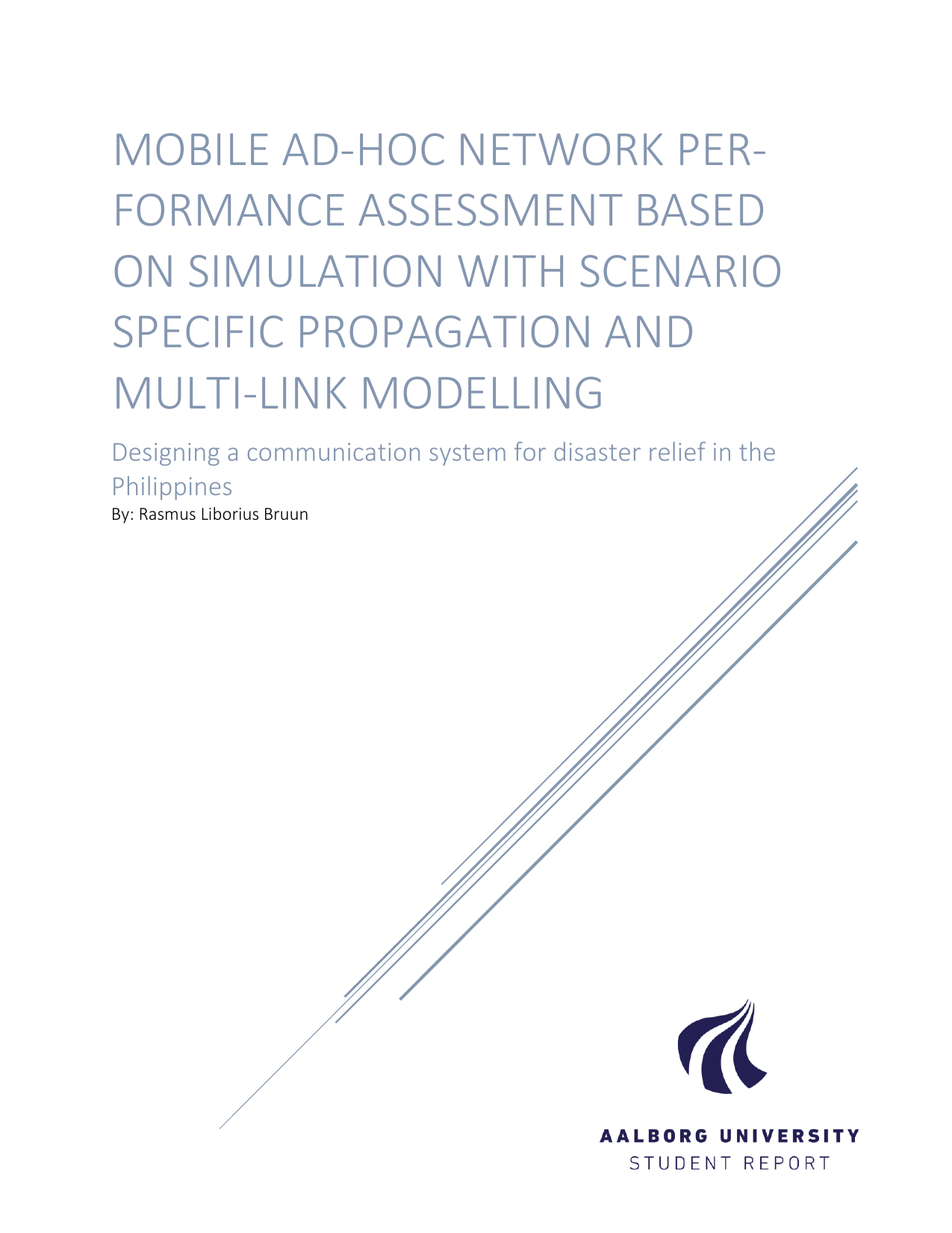
Mobile ad-hoc network performance assessment based on simulation with scenario specific propagation and multi-link modelling: Designing a communication system for disaster relief in the Philippines
Translated title
Mobile ad-hoc network performance assessment based on simulation with scenario specific propagation and multi-link modelling
Author
Term
4. term
Education
Publication year
2018
Submitted on
2018-06-06
Pages
70
Abstract
Natural disasters can destroy cellular and wired network infrastructure, subsequently leaving impacted areas without means of communication. The Reachi system com-bine mobile ad-hoc network devices with a gateway to aid the work of relief coordina-tors, by enabling communications from the catastrophe epicenter. A multi-link model which describe the wire-less links in the deployment area of the Reachi system is specified. The model con-siders spatial correlation of links, which is a commonly overlook factor in network eval-uations. The model is utilized for computer simulations. Simulation results using the model show consistently lower network performance in comparison to the equiva-lent model without spatial correlation. Simulations with the spatial correlation model is an important tool for design of link layer and network layer protocols for the Reachi system. Link layer protocols should synchronize the network and rely on randomization. Further evaluation is neces-sary to decide between a proactive or reac-tive routing scheme.
Documents
